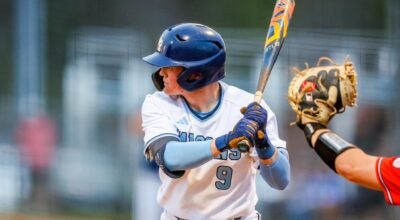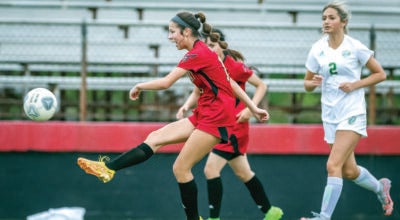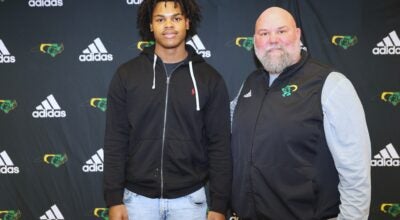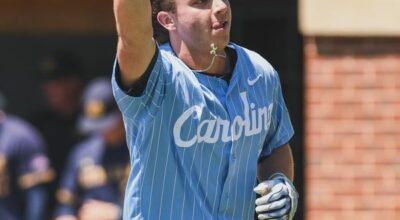Hall of Famer George Knox shares baseball memories
Published 12:00 am Saturday, June 13, 2009
By Mike London
mlondon@salisburypost.com
LANDIS ó Retired from the school system, but not from storytelling, 86-year-old George Knox’s baseball glory days were the 1940s.
There were few standings and fewer stats in his time, especially for men of his color. But games were played and legends were made.
It’s a fact that Knox entered the North Carolina A&T Hall of Fame in 1986.
Knox made his first bats by hand. You simply located a straight piece of ash, hickory or maple and made a bat.
“We played every sport when I was young, but baseball we played 75 percent of the year,” Knox said. “We played sandlot ball in any open field. If a field sat two years and wasn’t used to farm, it became a ballfield. We played every afternoon. Then we’d play after supper until it was too dark to see.”
Knox went to Aggrey Memorial in Landis and graduated in 1940. Aggrey had school teams, but Knox recalls no official conference.
Like every other mill town, segregated Landis also had its town teams ó white and black. Big-boy teams and small-boy teams.
“One day I was getting kind of big, oh, 14 or 15, and the big boys said to me, ‘Hey, Knox, we might need you tomorrow when we play at Cooleemee. Can you get over there?’ ” Knox recalled.
Knox could and would get over there because his mother, Moena Sherrill Knox, was a serious baseball fan.
“She was crazy for baseball,” Knox said with a chuckle. “Yes, I got to Cooleemee, and sure enough one of the boys on that Landis team didn’t show. They told me I’d play first base.”
Landis fell behind. Knox didn’t strike out, but he also hadn’t been on base. Suddenly it was the ninth inning.
“The boys were patting each other on the back saying, ‘This is it,’ ” Knox remembers. “I got up there to the plate with the bases loaded. The pitcher threw a little ol’ out-curve, and I tagged that ball. I got to first base and I see the ball sailing over the right-field fence, and it’s like all of Landis is shouting.”
Knox played with the big boys from that point forward. The next game he hit a long homer at Gastonia. That’s when they started calling him “Babe Ruth.” After he crushed another long one in Thomasville, homers were getting to be a habit.
“After that third one, everyone wanted to come see me hit,” Knox said. “Black and white. People liked to watch that ball go out. No one else was hitting them out.”
After graduation, he drove a truck for Linn Mills. His mother wanted him to enroll at Livingstone where she and most of her side of the family had been educated, but he was informed that he’d have to wear a blue suit. He didn’t own one.
He never had a chance to buy that blue suit. Pearl Harbor intervened. Knox got his draft notice to join Uncle Sam’s segregated army.
He became part of the 614th Tank Destroyer Battalion, a black unit with a handful of white officers that shed more than its share of blood on the frontlines. Among other engagements, Knox took part in the Battle of the Bulge in the brutal European winter of 1944-45.
Knox’s World War II experiences could fill a book and need to be told someday. Black soldiers in that war never got much credit from Hollywood or history books, but it’s a fact that 1,800 African-Americans landed at Normandy on D-Day.
The 614th did most of its training at Camp Hood in Killeen, Texas. Knox drove one of the trucks that hauled big guns that were supposed to destroy German tanks.
There was time at Camp Hood for recreation ó ballgames against other units or other camps. The 614th often competed against its sister unit ó the 761st Tank Battalion. The 761st had an officer who had been an athletic marvel in everything from track to basketball to football to tennis at UCLA.
His name was Jackie Robinson.
“Jackie was a good athlete, quite a bit heavier than me,” Knox said. “We played some together, but mostly we were on different teams. Jackie was rough as nails. If we played against his team in basketball, I always guarded Jackie. I was considered a pretty rough fellow, too.”
Knox’s unit was in Austria when the war ended. He spent several months there playing softball and waiting to be shipped to Asia or home.
“There wasn’t enough space there to play baseball, but believe it or not, playing softball led to a lot of college offers,” Knox said.
There were officers on hand from the West, Midwest and Northeast who had interest in recruiting standout black athletes. Knox had offers from Nebraska, Iowa and Kansas, among others.
He was shipped home shortly before Christmas, 1945, and was discharged the first week of 1946.
He was more than ready for college, but he’d been gone four years already and his mother couldn’t bear seeing him go to school halfway across the country. He narrowed his choices to Tuskegee and Hampton.
He made a casual trip to North Carolina A&T, only because friends asked him to ride along. A psychology professor took one look at Knox and asked if he was an athlete.
“Somewhat,” Knox said.
The professor went to get football coach and AD Big Bill Bell, who had been the first black football player ever to suit up for Ohio State.
“Football?” Bell asked
“I’ve played everything, but I’m best at baseball,” Knox replied.
Soon Knox was surrounded by A&T baseball coach Tubby Gentry and five players.
“This is George Knox, and he’s been around the world and back,” said Gentry, introducing Knox. “He plans to go to Hampton or Tuskegee. Are we going to let him go to one of those places?”
Of course, they weren’t.
A few days later, Knox received all the necessary paperwork by mail. He was an Aggie. On scholarship.
“We were good, really good,” Knox said. “We won like 19-3 a whole lot, except when we didn’t let them get three. I played left field. My batting average was only .320, but I didn’t get a lot of scrub hits. I hit for distance.”
A right-handed hitter, Knox liked to pull the ball, but if they put a shift on him, he could hit to right field.
“We were playing the Goshen Red Wings, a black pro team, in Greensboro once,” Knox said. “I hit one over their first baseman’s head to win that game.”
Shaw was A&T’s biggest rival.
“Shaw always played us the toughest,” Knox said. “I remember we went down to play South Carolina State once and we played Livingstone on the way back, and that was just murder and misery for Livingstone. I recall we beat Howard so bad one time that I’ve just got no words for it. When guys got on base in front of me, I got them home 90 percent of the time. That was my job as cleanup man.”
Knox has a scrapbook of World War II memories, but it also includes faded clippings and boxscores from Greensboro papers. Most tell tales of lopsided Aggie wins and long hits by Knox.
Knox, who graduated from A&T in 1950, has fond memories of his teammates and coaches. He was a key part of CIAA championship teams in 1947 and 1948. He lettered all four years and was All-CIAA twice.
“I had deep buddies on those teams,” said Knox, who weighed 175 pounds in his prime. “Our other teams rode charter, but the A&T baseball team rode in a rickety old bus we called Raggedy Ann, and we were just as satisfied. We rode to Washington, to Philly, and we always won. Nobody cut nobody down. Nobody had harsh words. We were very committed to each other.”
Knox didn’t play pro baseball. He went into education, did his practice teaching at Kannapolis’ Carver High, then got landed his first teaching and coaching job in Warren County.
The rest his history. He was appointed principal of segregated R.A. Clement School in Cleveland in 1956 and returned to Rowan County. He became the first African-American principal of an integrated school in Rowan County in 1968 when Clement became West Rowan Junior High. In 1986, he became the first African-American elected as a Rowan County Commissioner.
“I’ve had my share of tough days,” Knox said. “But I’ve had some others as good as anyone’s ever had.”





